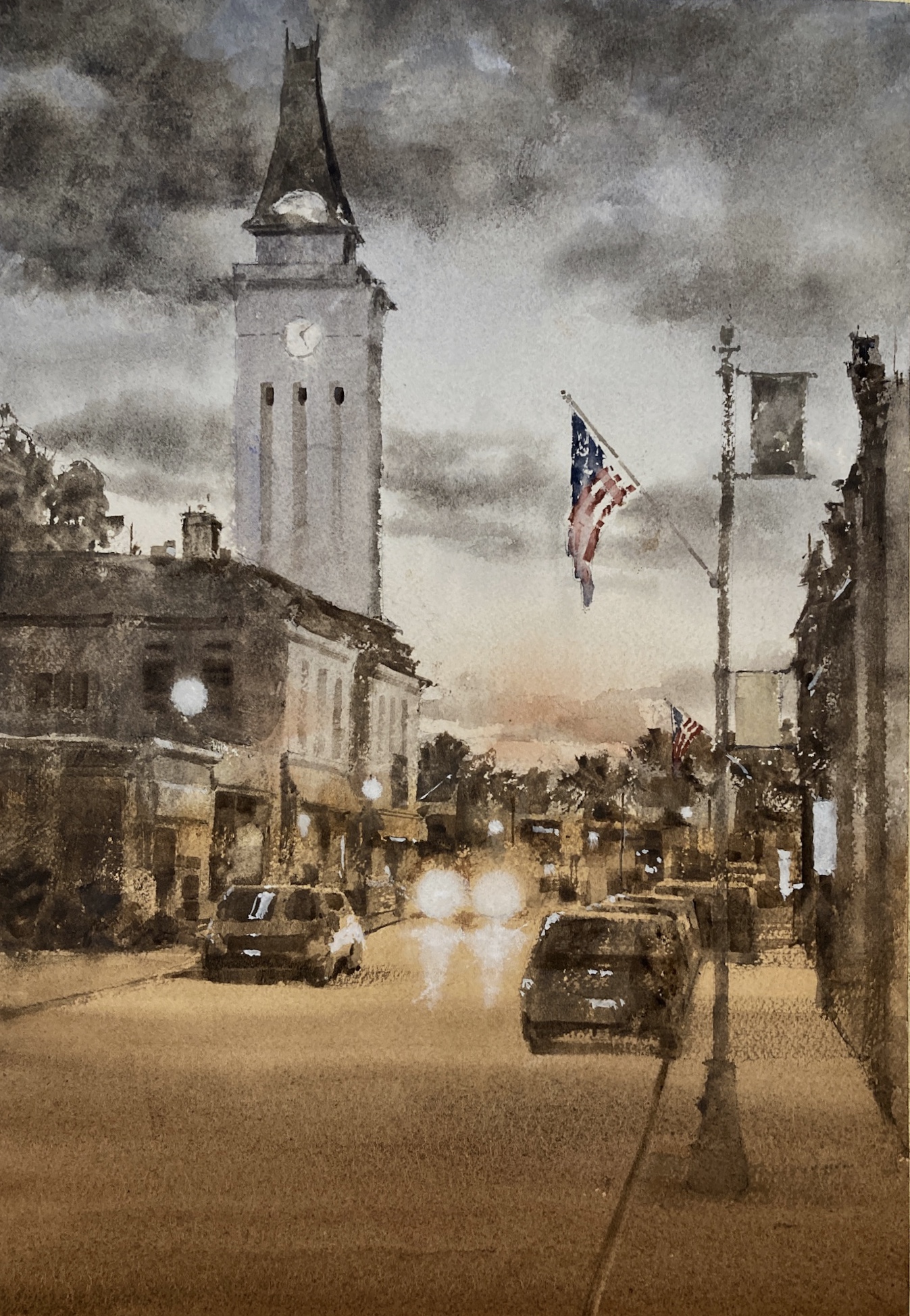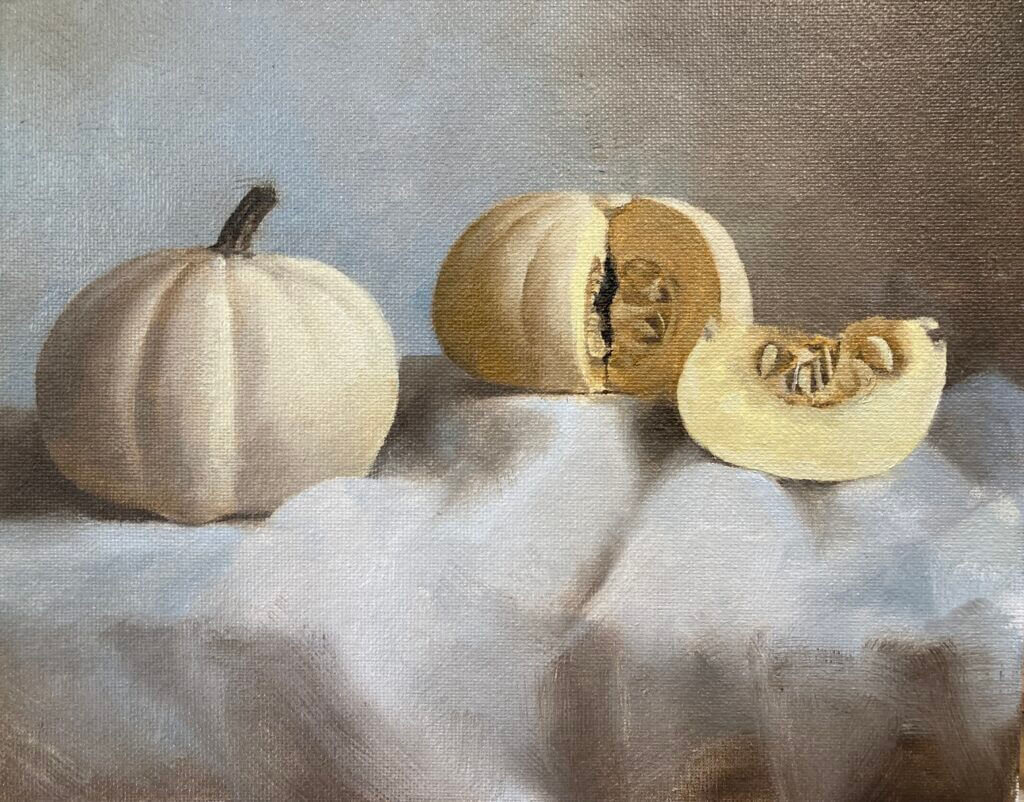
How important are value studies? I have to admit that I have only recently started doing them as part of the process. A few years ago I tried to do them but found scaling up to the real painting very difficult. So I stopped. But over the past year I’ve finally found them useful.
After the Marlborough at dusk struggle to a triumph I’m spurred on to another New England street scenes. I really enjoy these but they are hard to design and hard to paint. When they come off though they make really good paintings (IMO of course). Today was value study and color study day. Here is the photo reference:

This is from a visit a few years ago and the strong light and tower caught my eye but, as you can see it’s not an obvious choice for a painting. But if we can make a decent value sketch out of it we may have a chance.
First was some noodling on the ipad. I find this great for trying out ideas. You can work in a small range of values and add new layers if you want to try something out. If it doesn’t work just delete the layer. So what did we find?



Yeah I think there’s something there. I added in some of the buildings on the right hand side to give some balance to the left. I also ruthlessly pushed those dark trees to a lighter value both to push them back and to provide some contrast with the foreground tower and car. The thing I like the most is the pattern of light off the roofs and the car which I need to remember to retain in the final painting.
Ok so far so good – onto some paint value studies. Pretty small with minimal drawing and trying to keep to around 4 values throughout the whole thing.


This is the same sketch at different stages. I was in two minds whether to include the dormer window on the left hand roof so took a photo half way through. I’ve compressed the scene widthways a little so things aren’t too stretched out and made the central car a little more prominent. I think we’re still looking good.
Finally I tried out a very rough color sketch. This was just to try out some colors as the photo colors are not very inspiring but I still want to retain a sense of the hard sunlight.

This is teeny – around 2”x4” but I wanted to see if a blue sky would work with some rich browns for the buildings. I’m still in two minds but it looks promising.
Next time – onto a big version!





